The Big 5 (or in my case 3)
- Barbara Seith

- Jul 14
- 7 min read
The Big 5 Mammals who were designated because they are the most dangerous to hunt on foot, are Lion, Buffalo, Elephant, Leopard & Rhino. For purposes of this trip (and the last one) I can only address three of them Lion, Buffalo & Elephant, but I did have some spectacular experiences. Saw Lion's mating (which is featured in the "Blue Edition" post) but the rest of the Lion experiences are here.
Lions roar! Their tawny, yellowish-brown coats blend with the savanna, accented by black-tipped ears and tails. They are engineered for explosive power. Their bite force delivers lethal spinal or throat bites. Long canines sever nerves, while their strength, equivalent to 10 men, fells prey like buffalo. They sprint at 37mph over short distances but lack stamina, relying on strategy.

This is not a Lion, it is a very dead Wildebeest - Killed by Lions

When we first arrived the area where the Lions were was blocked by other cars, so Andrew maneuvered the Vehicle into a good spot for me to take photo and did this.
The Killers came over!

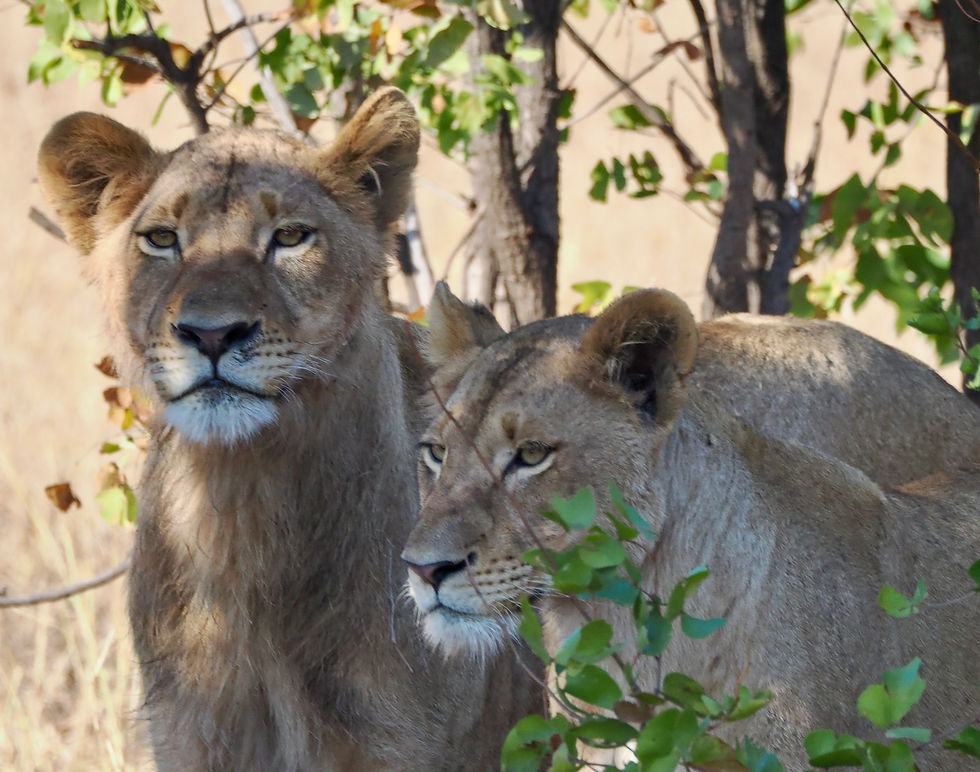




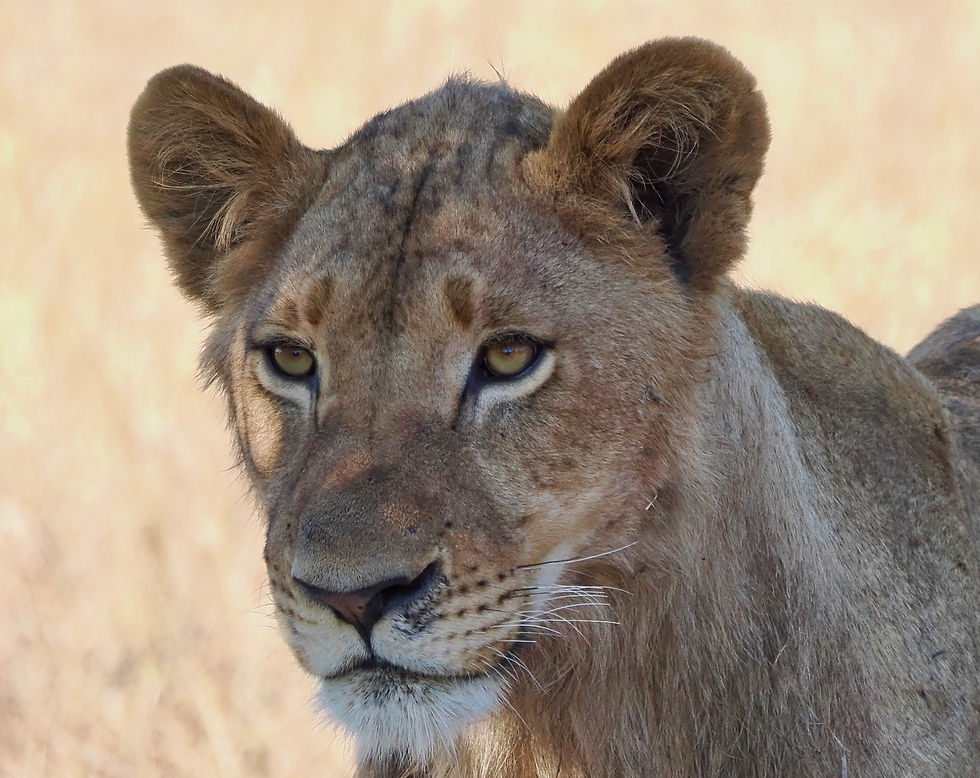
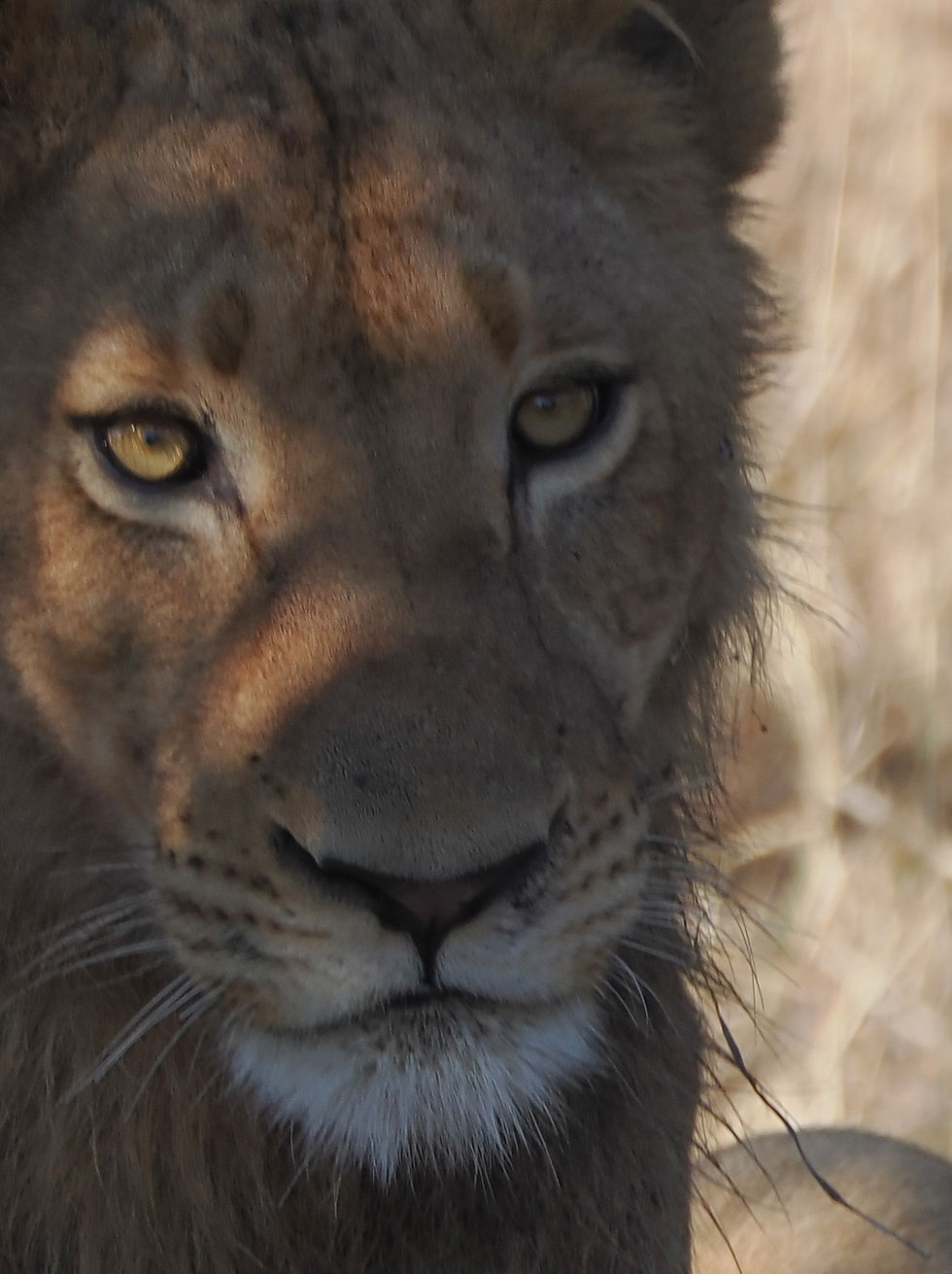
Near the end of the trip heading back toward "Cat Country" (Satara) we happened upon this scene
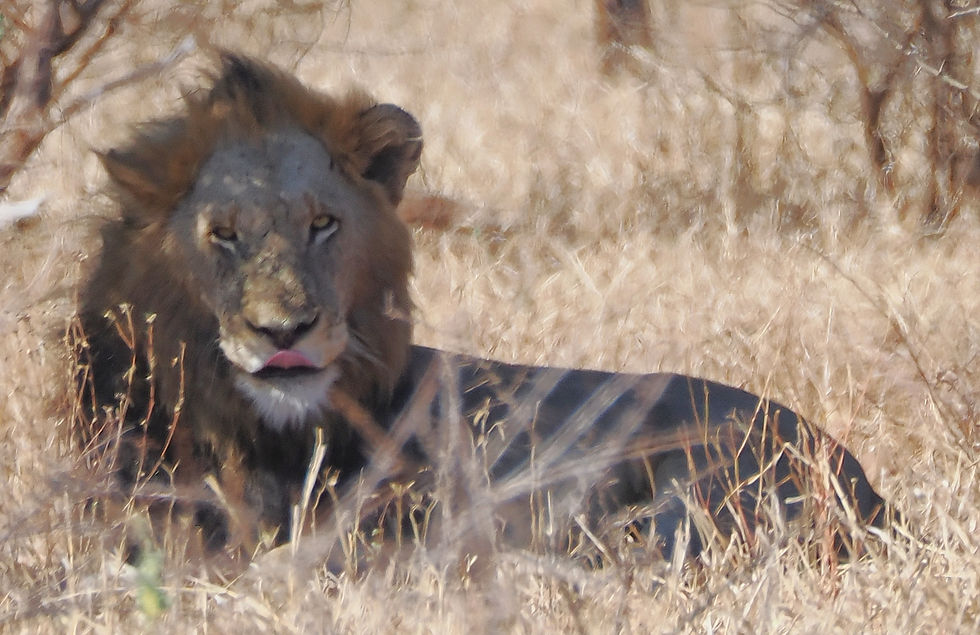


I started video-ing him. Very cooperatively he decided to get up -- when he picked up speed towards us, I wanted to flip back to taking still photos and sort of lost control of my camera lens -- I think it almost looks like I am being attacked by the Lion. I am not...
But I did get my still photos...
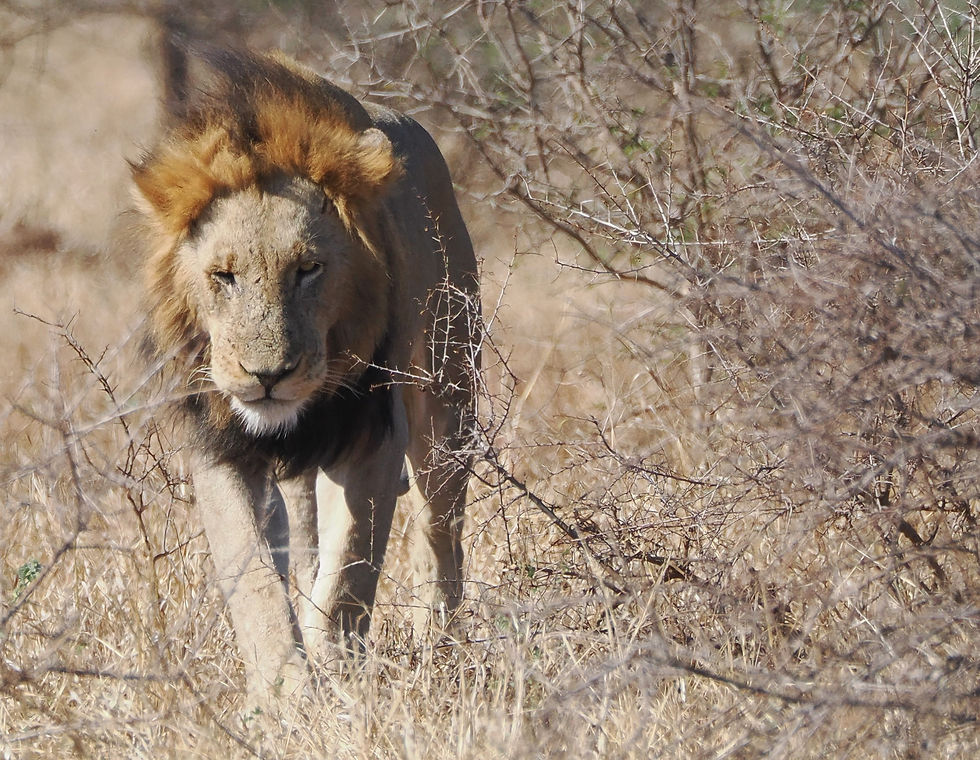

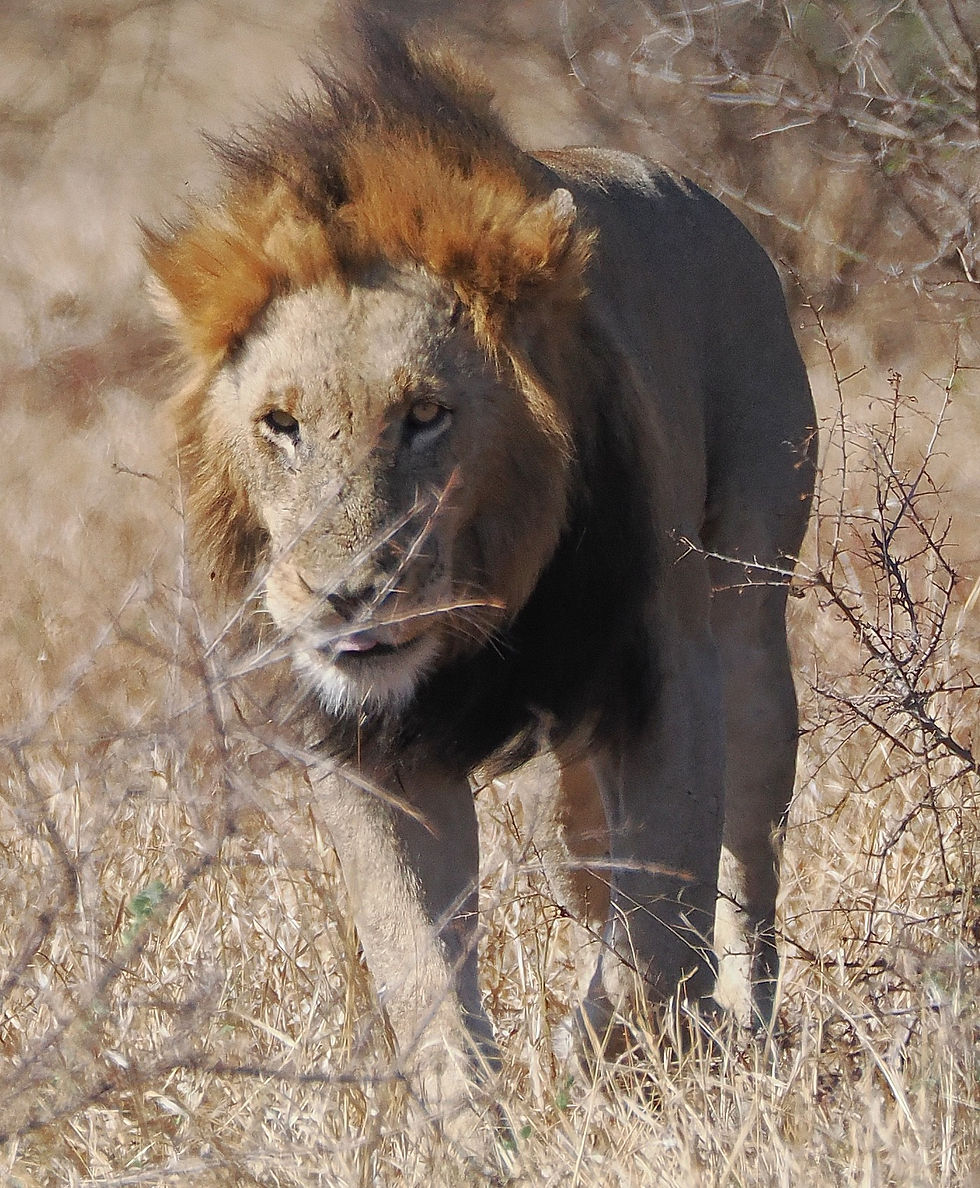

On our last morning we sat at a waterhole for a good while hoping to spot a Leopard -- we did not. But Andrew told me a story about a time he was here watching individual Impala's come up to the waterhole to drink and there were several Lions who would attack & kill the Impala and put them in a pile -- they didn't even have the respect to eat them right away. Anyway on the last sortee -- one of the Lions dislocated its hip and limped painfully away.
Later on we spotted a Lion on a road a few Kilometers away and it was THAT injured Lion. The injury is probably as healed as it will ever be. Still he seems to be getting along ok -- you can judge for yourself.



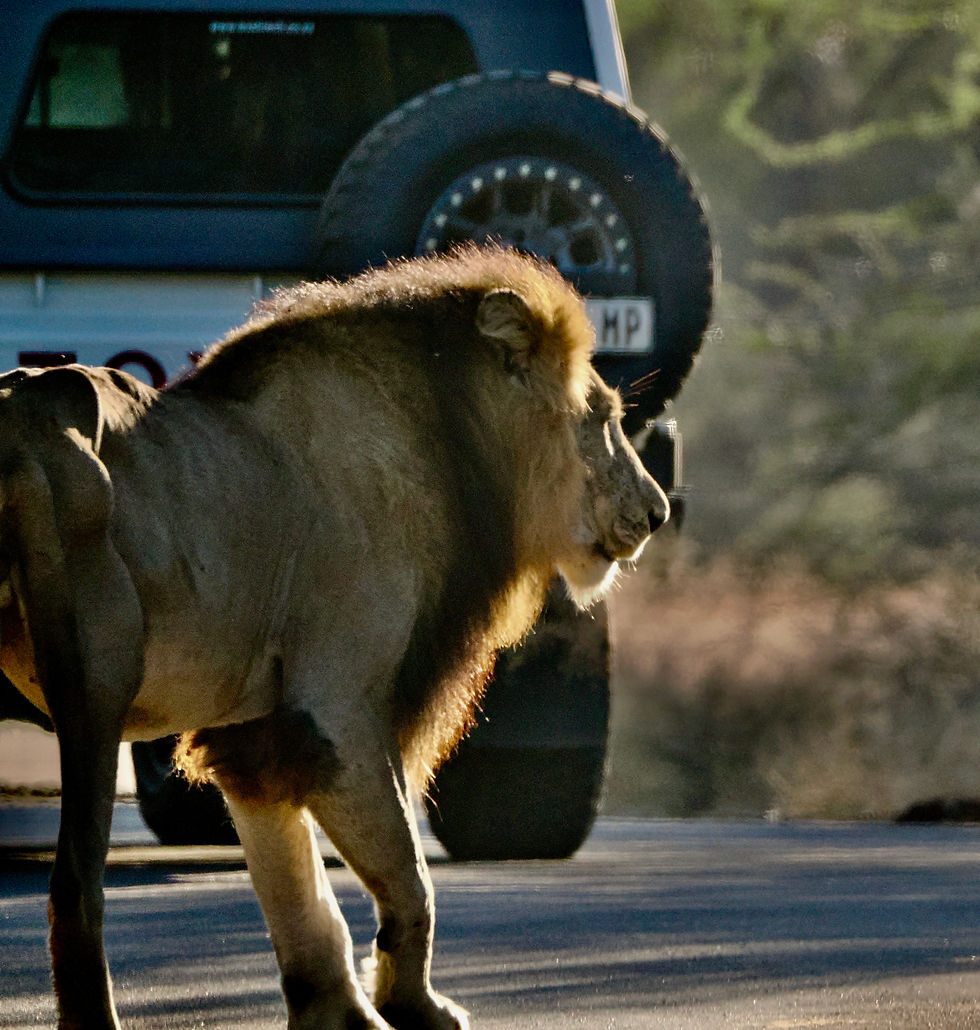




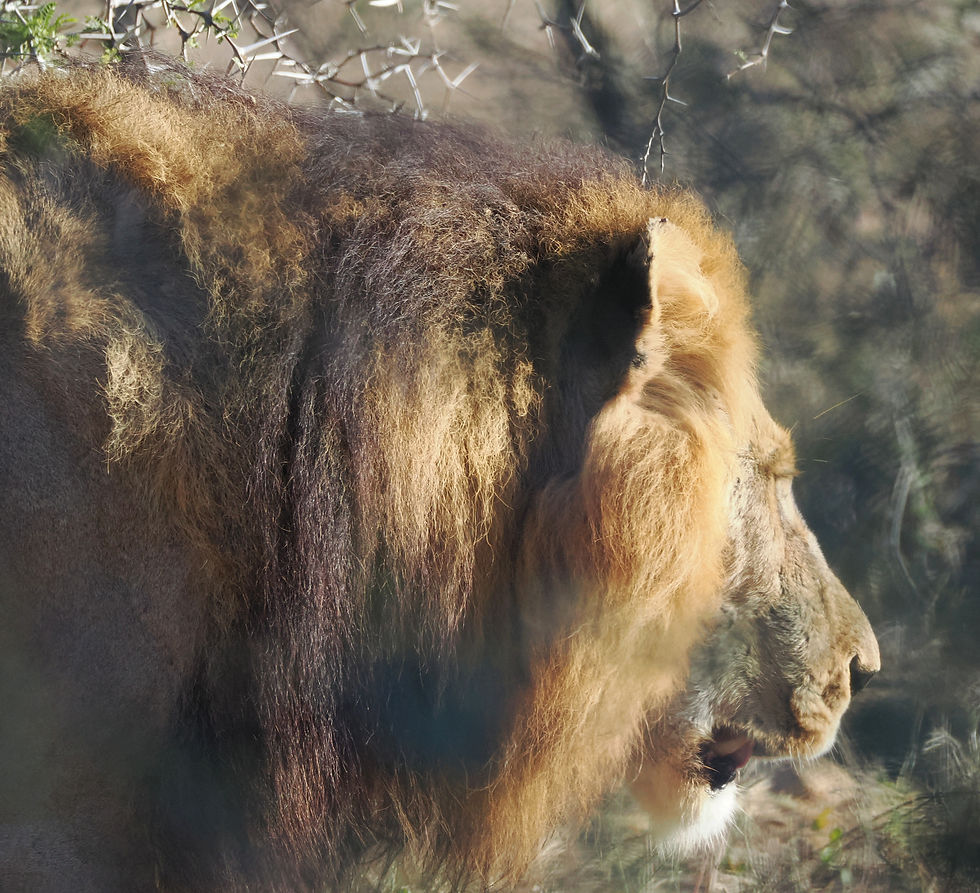


Cape buffalo is formidable but not very tall species but still it stands less than 5 feet tall at the shoulder and has relatively short strong legs. What it lacks in height, it certainly makes up in weight, which can be close to a ton. Both sexes have horns. Adults are jet black and youngsters coffee brown. These dark colors make Buffalo susceptible to a wide variety of parasites that are attracted to the dark humid under belly. This makes them a good home for Oxpeckers.
Buffalo love a good mud bath. They are prone to parasite activity and as such old bulls will have a very patchy hide with clear areas that are hairless, cracked and sore. Buffalo will sit in mud and coat their bodies as both a protective barrier against the sun but also when the mud dries and hardens they can then exfoliate by rubbing themselves against a rock or tree stump. This helps to manage their parasite levels. Old lone bulls are often caked with the mud and have adopted the name “Dagga Boy” which is synonymous with old cantankerous Bulls. The name Dagga comes from the local Zulu dialect meaning mud.

The aforementioned Oxpecker -- this one is Red-billed
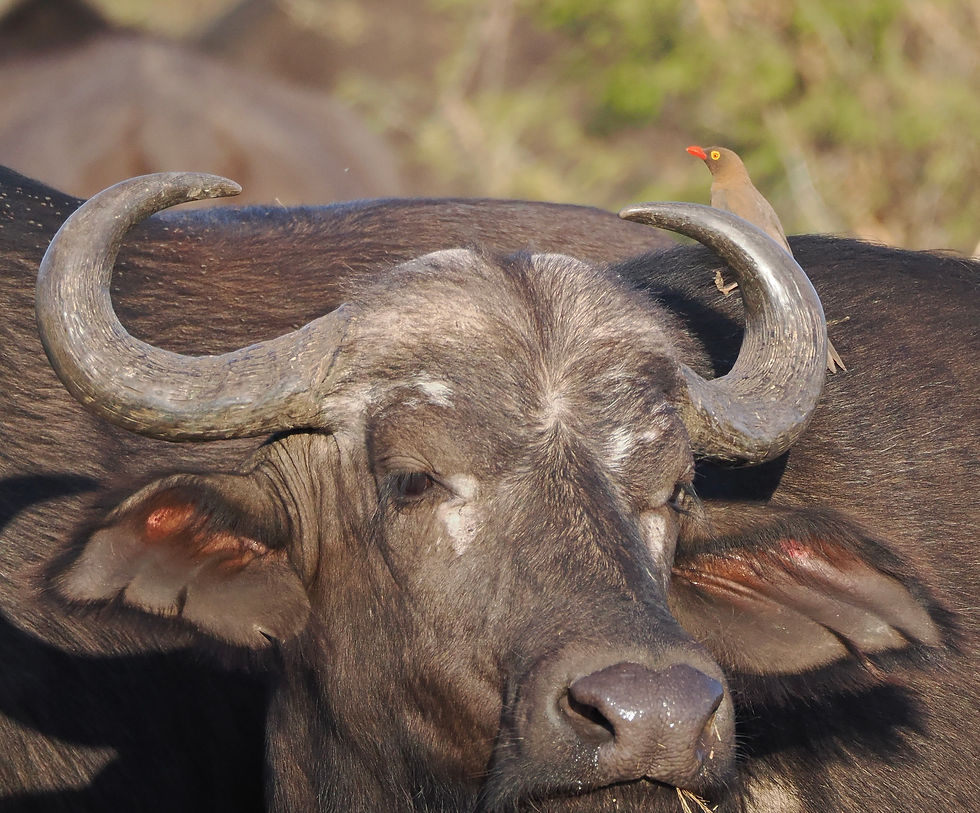
Baby & Mom

This one is probably less than a day old -- the umbilical cord usually drops quickly and you can still see it here.

Mom joins...
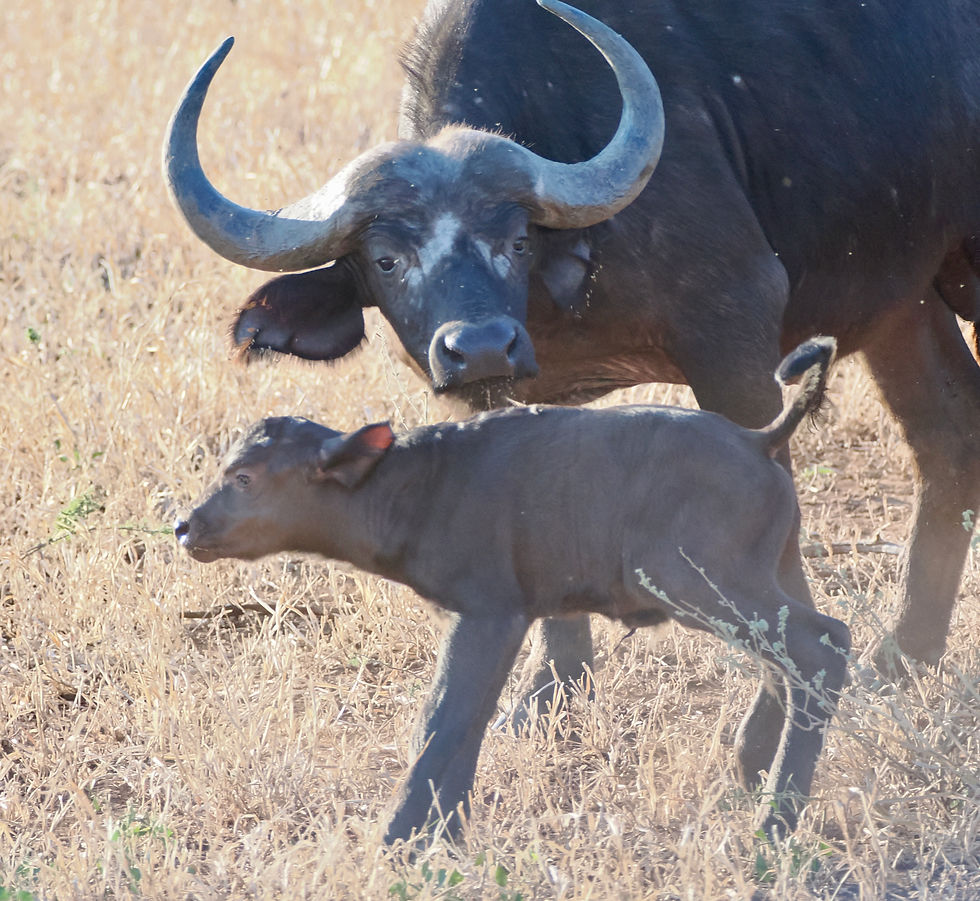
This looks like an older juvenile...

Large Male with an insect infestation -- darn that dark coat!

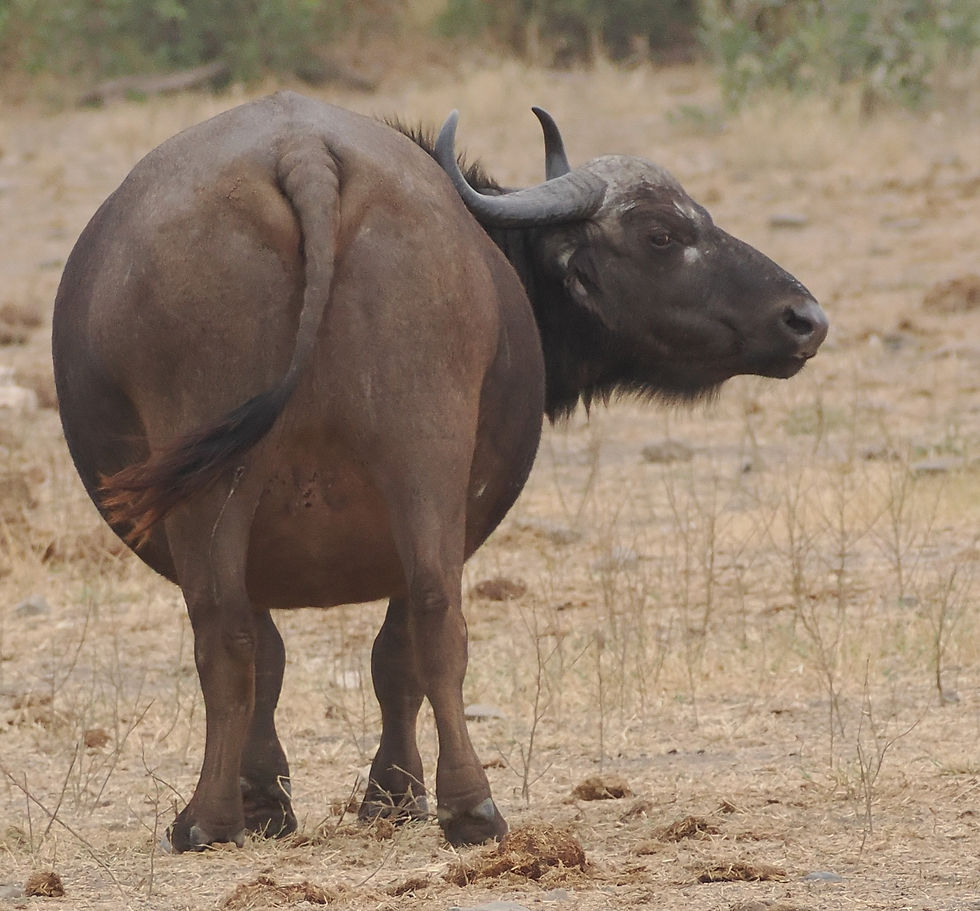
A Dagga Boy with hitchhikers...

More Hitchhikers -- Yellow-billed this time


The one on the bottom left is an Aspiring Cape Buffalo -- the only Wildebeest in the herd...

Imagine standing in the vast expanse of the African savanna, the air thick with the scent of acacia and dust, as a towering African Elephant, the planet’s largest land mammal, locks eyes with you from mere meters away. At six tons, its sheer presence humbles you, recalibrating your sense of place in the wild. It’s a force of nature, a living architect of ecosystems, and a creature of profound intelligence and memory.
They have @400 distinct vocalizations, including infrasound below human hearing, elephants communicate across vast distances, earning them the moniker of possessing “elephantine extrasensory perception.” Matriarchs, often the oldest females, guide herds with wisdom stored in their prodigious memories, navigating to water sources during droughts.
Elephants exhibit empathy, mourning their dead and showing cooperative behaviors. A 2021 study in Nature revealed that elephants adjust their foraging to minimize competition with other herbivores, promoting biodiversity. They are amazing creatures – We were very lucky to have a multitude of different experiences with them - I highly recommend spending time with them!
One of our first herds...
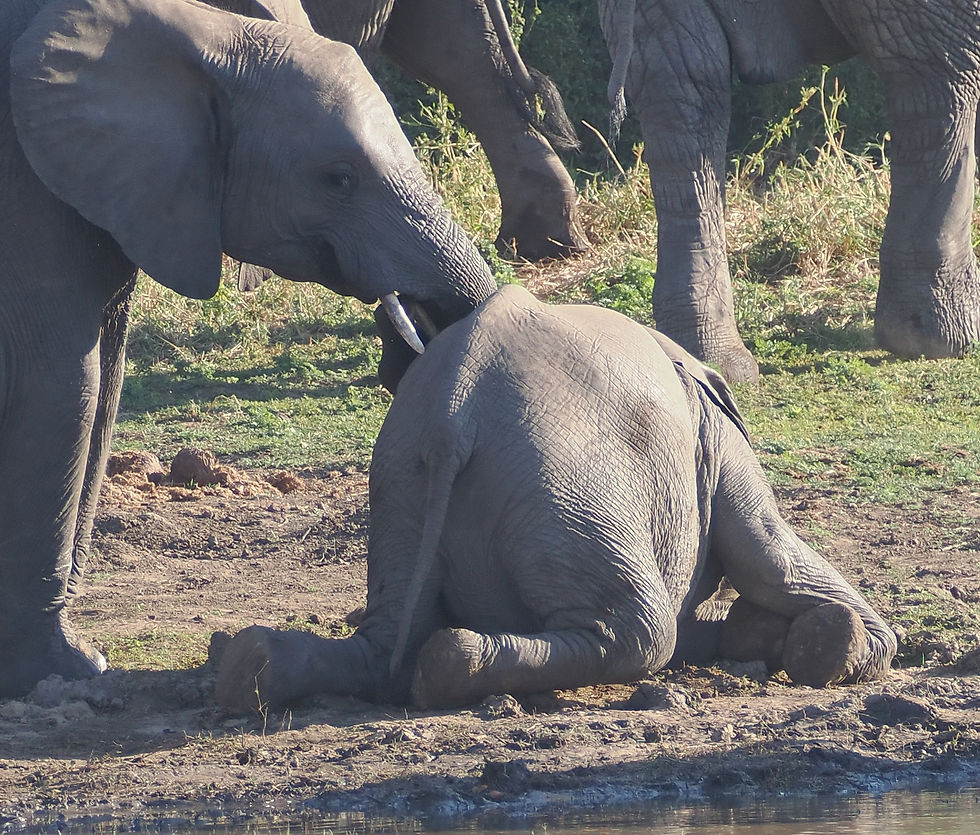
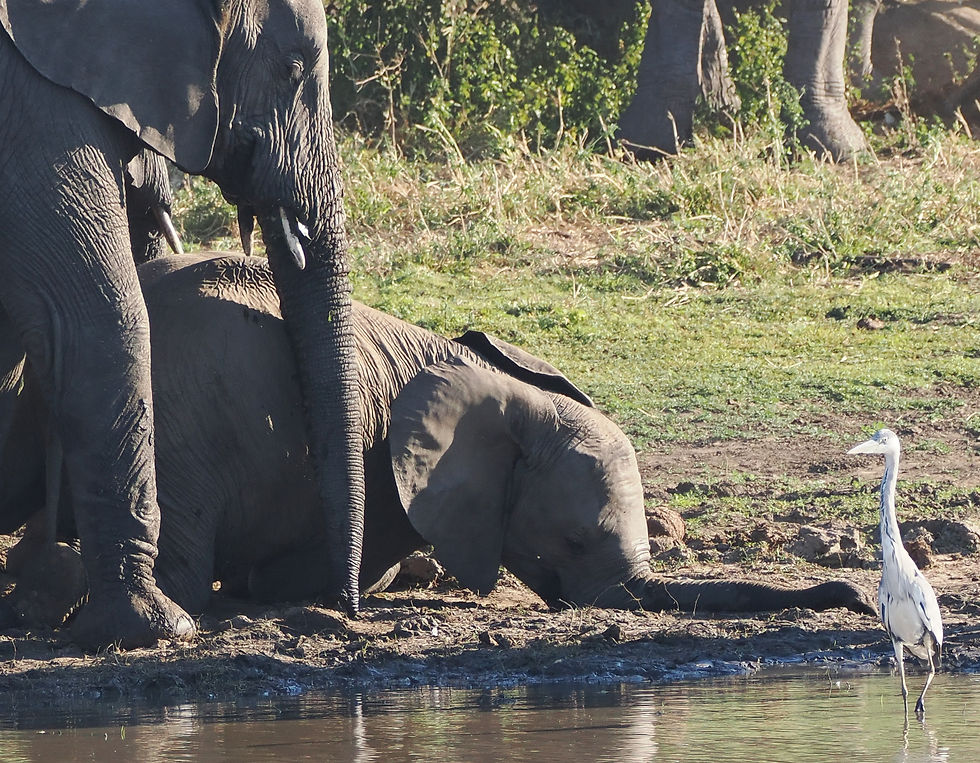




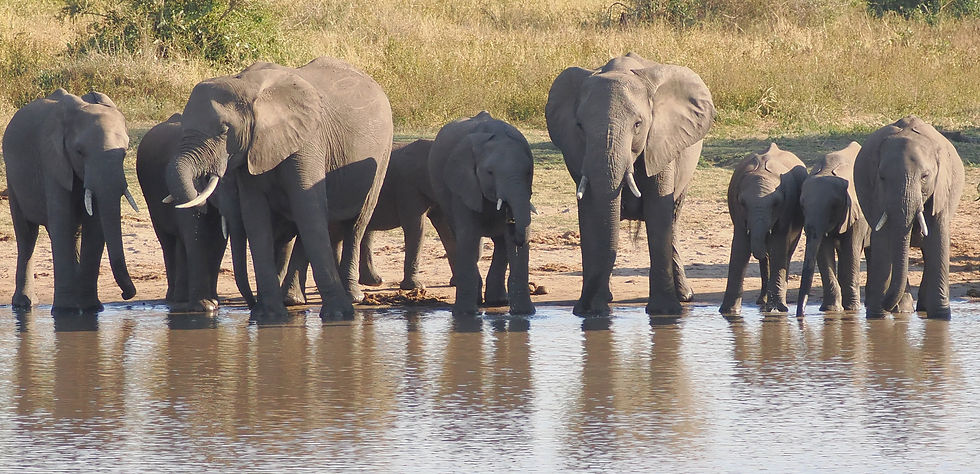



Lots of up close and personal opportunity to observe their behavior - like this "dainty" ear-flapping




This Ellie is picking grass - roots & all and smacking it on the ground to get rid of some of the dirt and other inedibles.

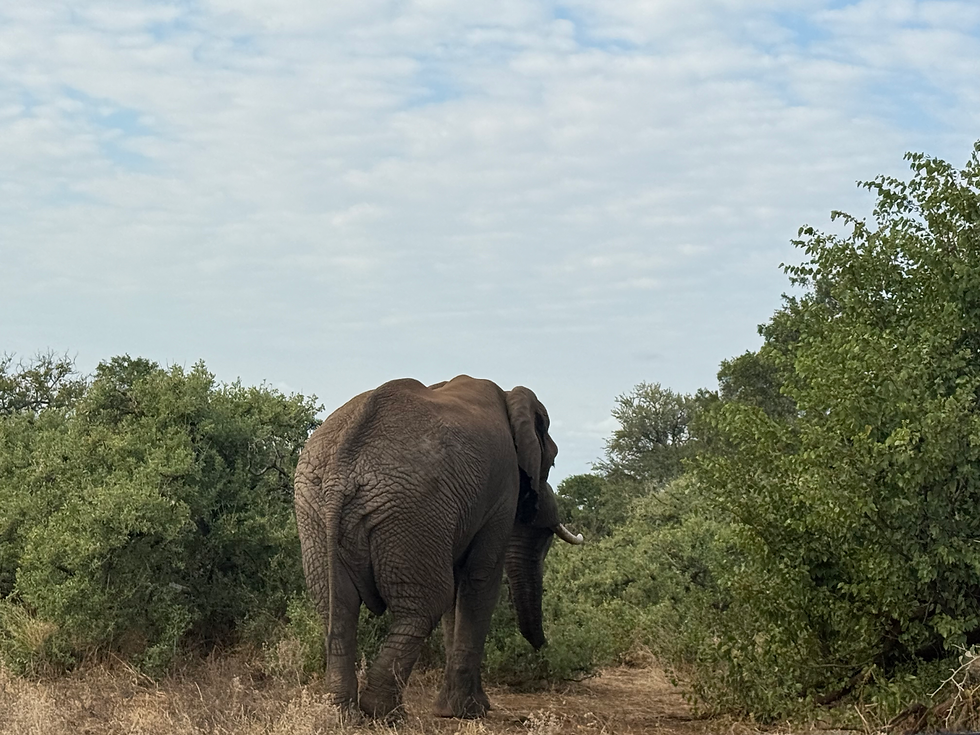


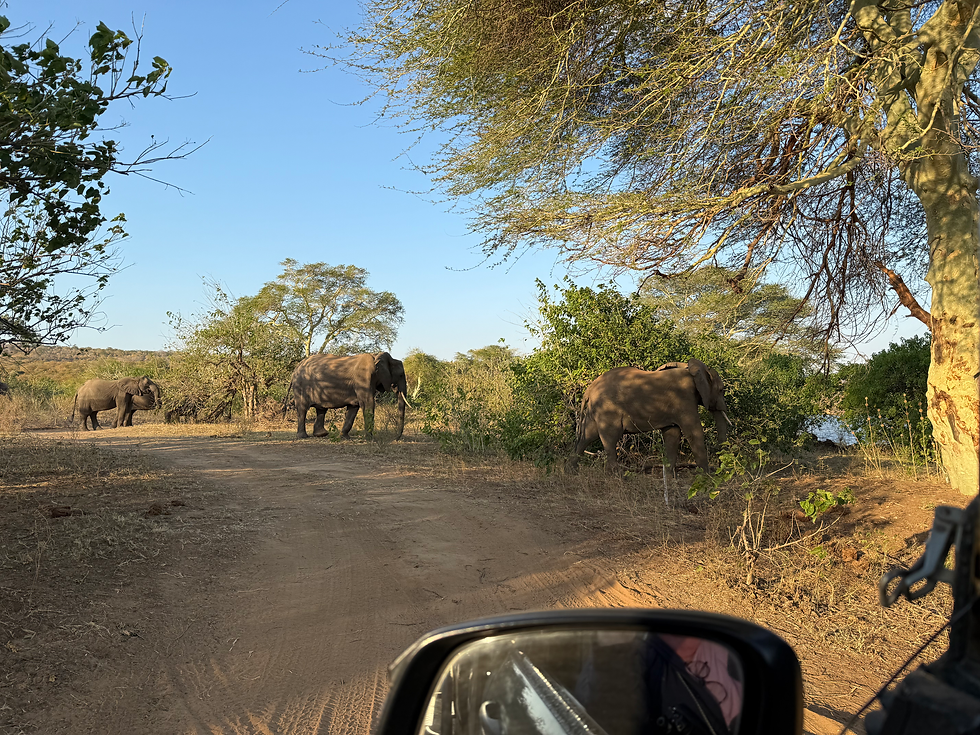
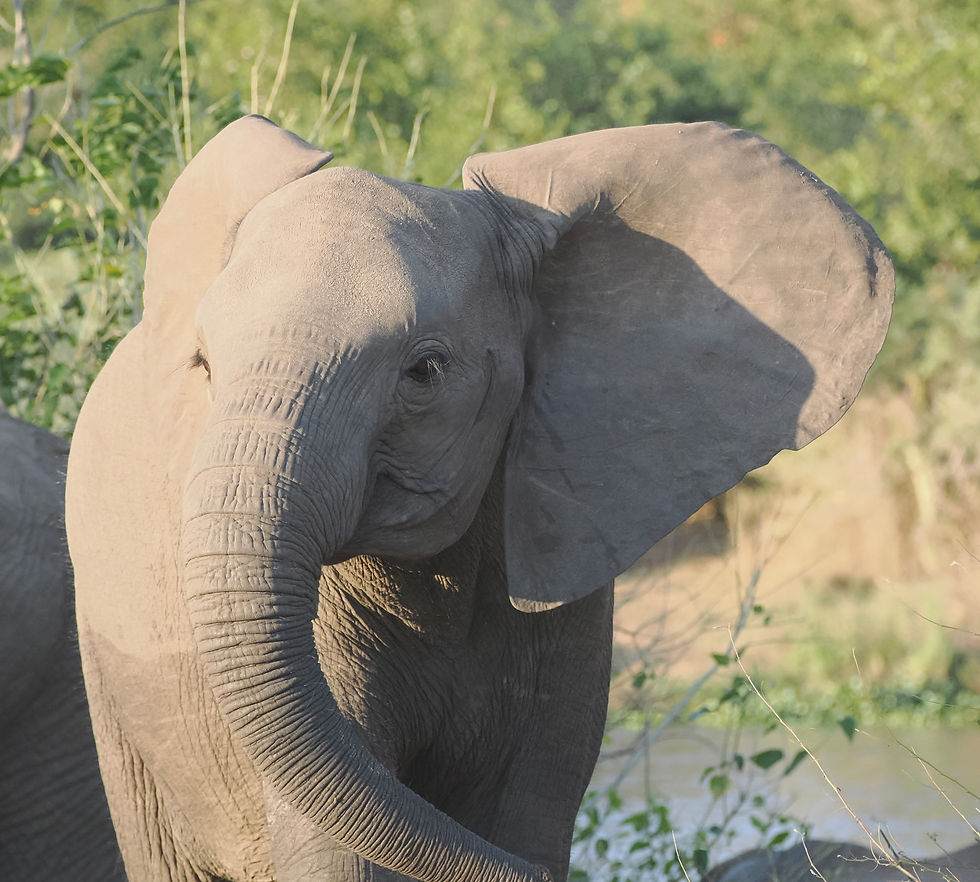

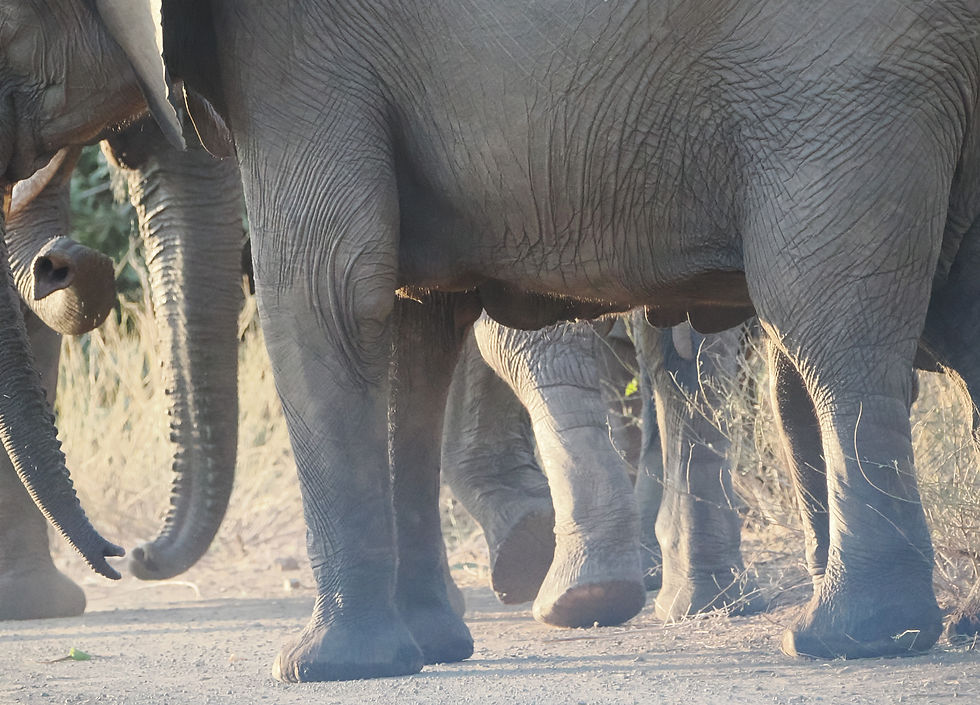
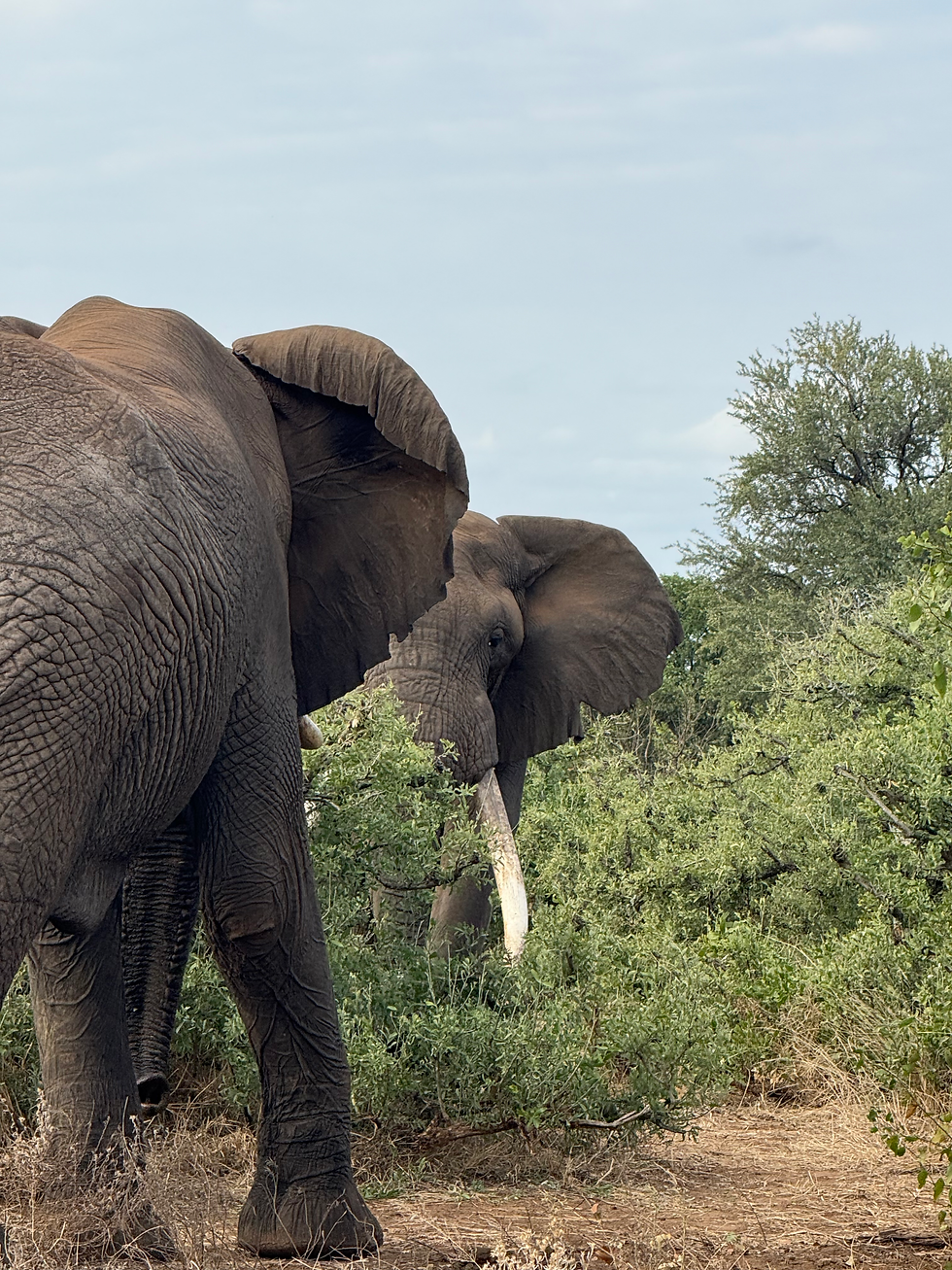
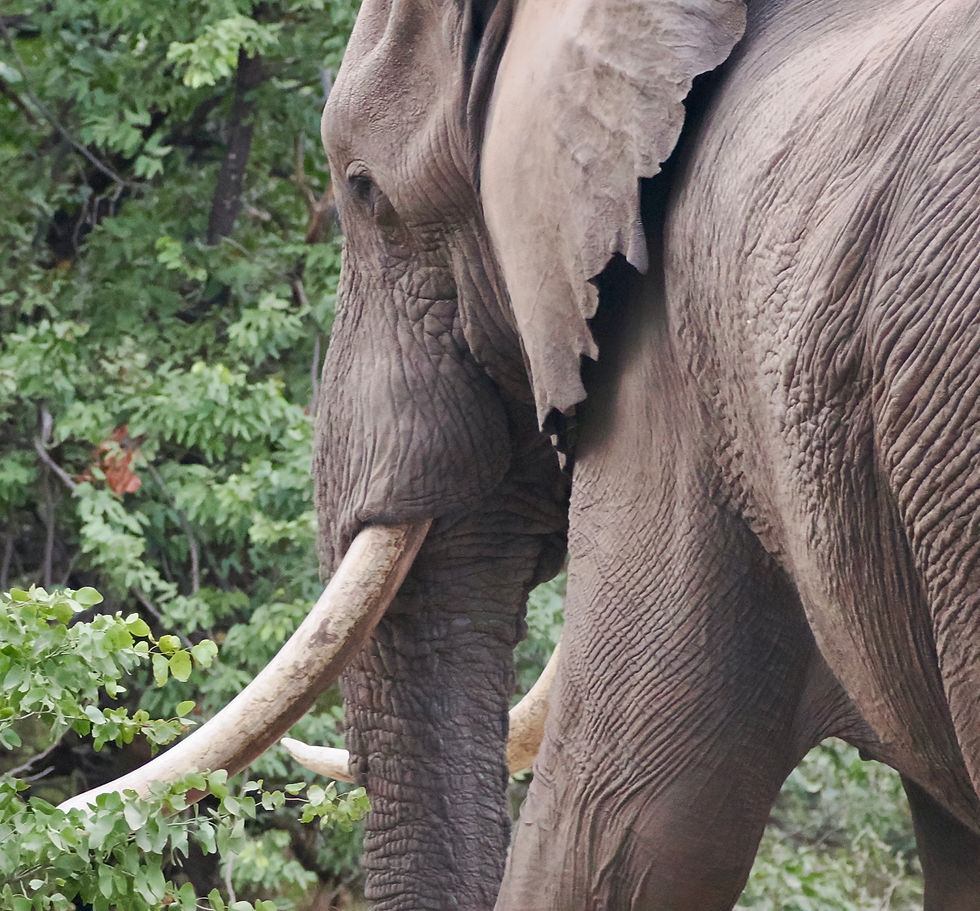
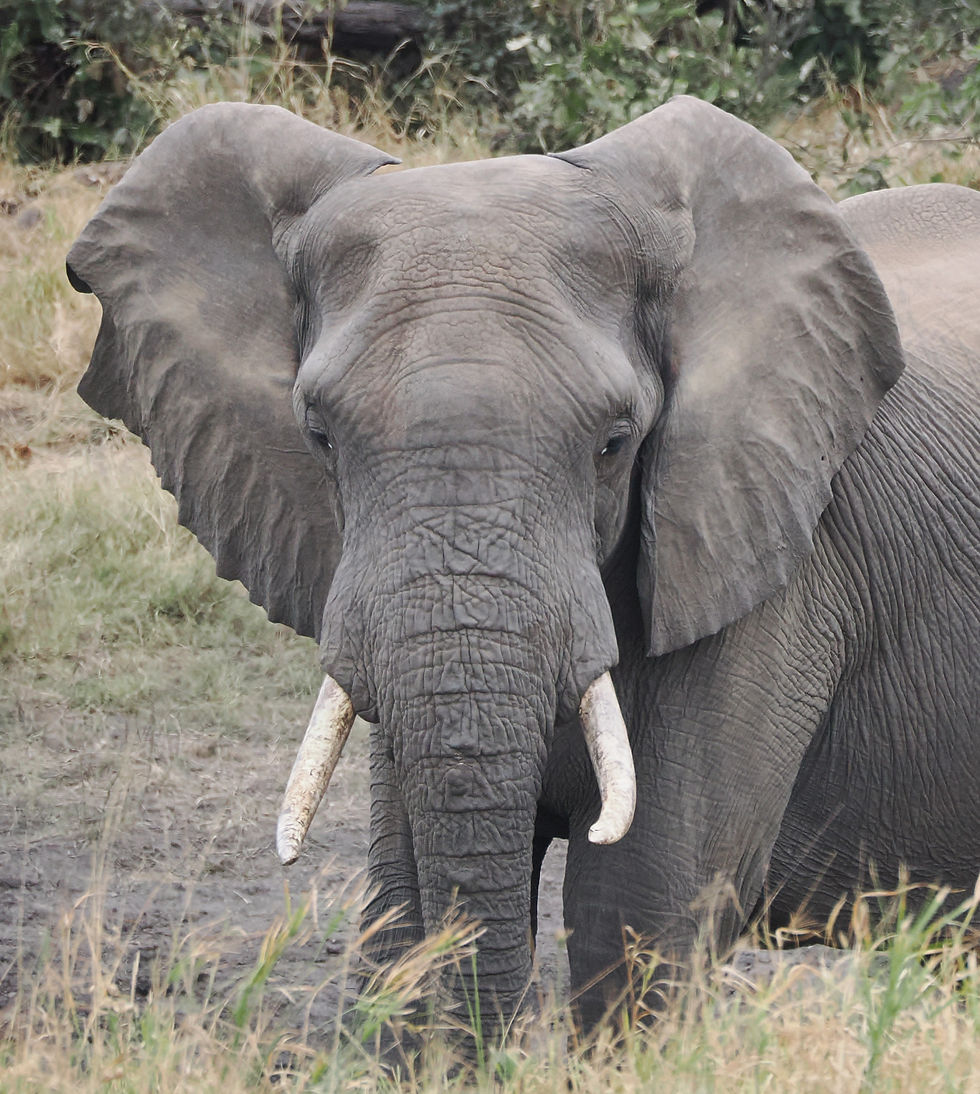

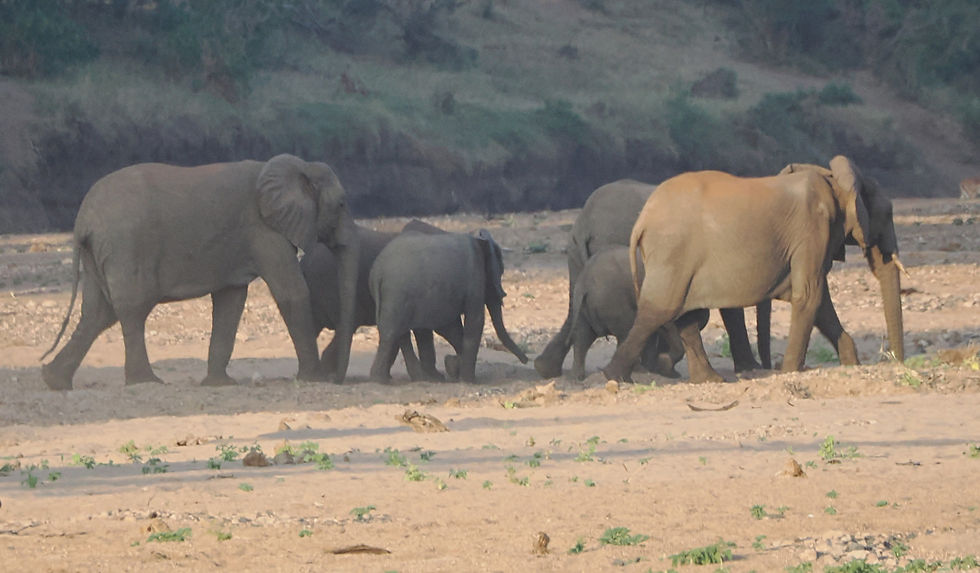


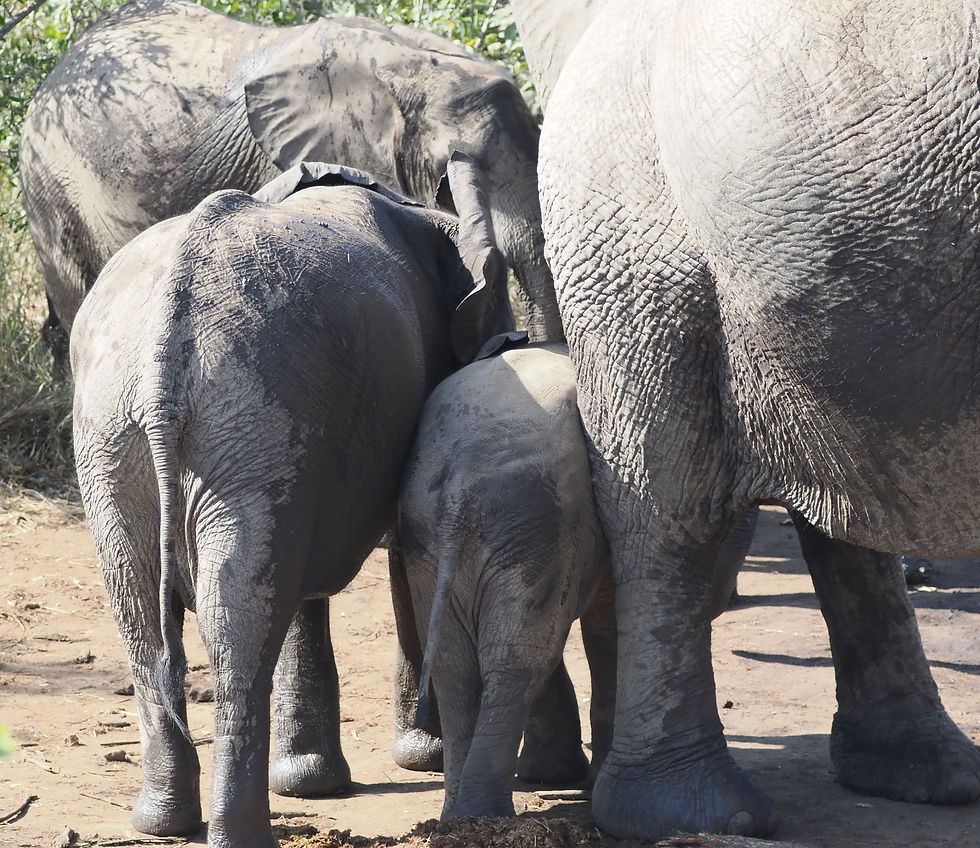
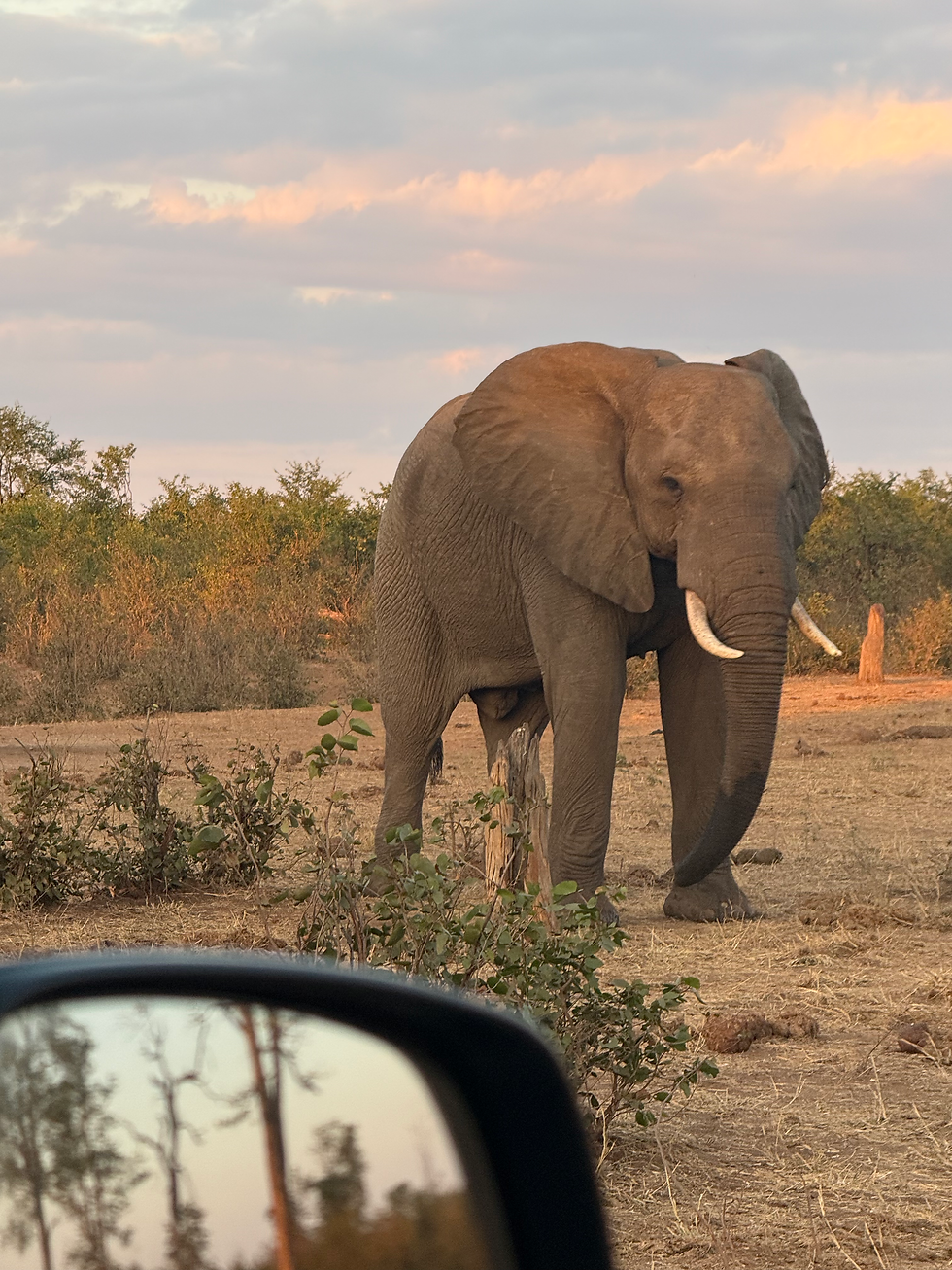
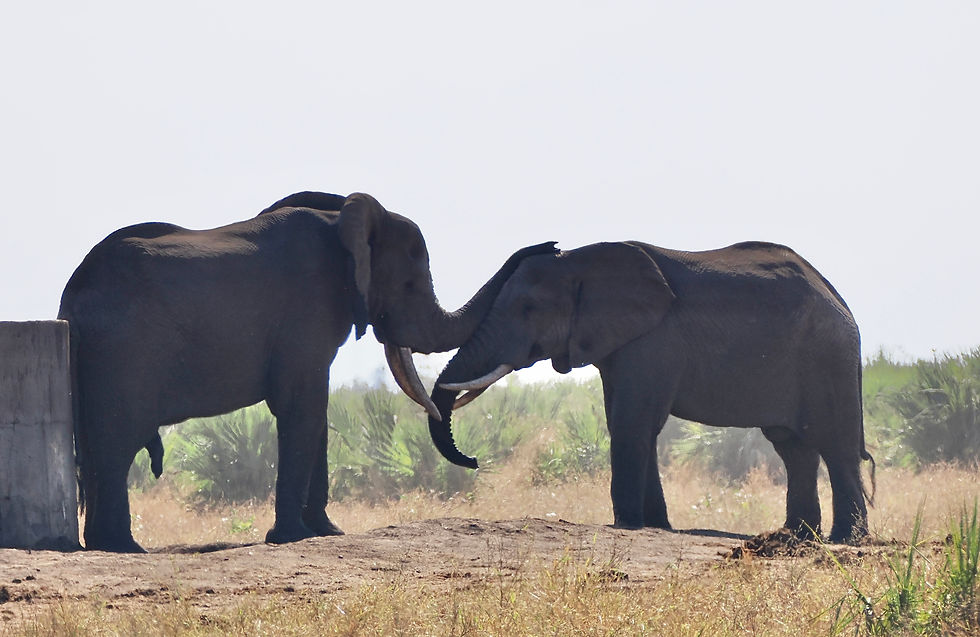

We had the privilege and wonder of an encounter with one of Kruger's Current Big Tuskers (see first post about Elephant museum) This was filmed by Andrew Wagner, owner of Safaria.co.za and my amazing guide for this trip.
Here are some excerpts from Andrew's Blog about this Elephant - Xidudla (pronounced Sh-Dude-La).
The Kruger National Park, one of South Africa’s most iconic wildlife sanctuaries, has long been home to some of the world’s most impressive and awe-inspiring elephants. Among these magnificent creatures, the “big tuskers” – elephants whose tusks weigh over 50 kg (@100 pounds)– are legendary for their size, presence, and remarkable beauty. One such emerging tusker, rapidly making a name for himself in the park, is Xidudla.
Who is Xidudla?
Xidudla, an imposing bull elephant, is a rising star in Kruger’s elephant community. He is an exceptionally large elephant whose tusks are still growing, and his stature is enough to take anyone’s breath away. With his majestic frame and distinct tusk shape, Xidudla has captured the attention of wildlife enthusiasts, park rangers, and photographers alike. His name, “Xidudla,” which means “a very large thing” in the local Shangaan language, is a fitting descriptor for this emerging giant.
The Region Xidudla Calls Home
Xidudla roams the southern regions of Kruger National Park, particularly around the Letaba and Shingwedzi areas, which are known for their large concentrations of elephant herds and diverse wildlife. This region is not only rich in game but also offers a variety of habitats – from lush riverine forests to expansive dry savannahs, all of which support a thriving elephant population.
Xidudla in Action: Captured by Guide Andrew Wagner
Recently, Guide Andrew Wagner of Safaria had the rare privilege of capturing footage of Xidudla in his natural habitat. In the video, we can see Xidudla walking majestically through the landscape, his massive tusks nearly brushing the ground as he moves through the bushveld. The sheer size of this bull, coupled with the grace with which he moves, is a testament to the power and beauty of these animals.
Wagner’s footage offers an incredible glimpse into the life of this emerging tusker, showcasing his presence within the park’s elephant hierarchy. The video highlights not only Xidudla’s remarkable tusks but also his confident movements and the subtle leadership traits that many large bull elephants exhibit. His growing fame is a testament to the importance of conservation efforts in Kruger, ensuring that these giants continue to thrive in their natural environment.
For me a once in a lifetime experience, methinks Andrew experiences it more often.
Here are some of the photos from the encounter..
This is one of the Askaris (Bodyguards) -- note dirt on his head (leftover from Mud baths) that falls off when he tosses his head.





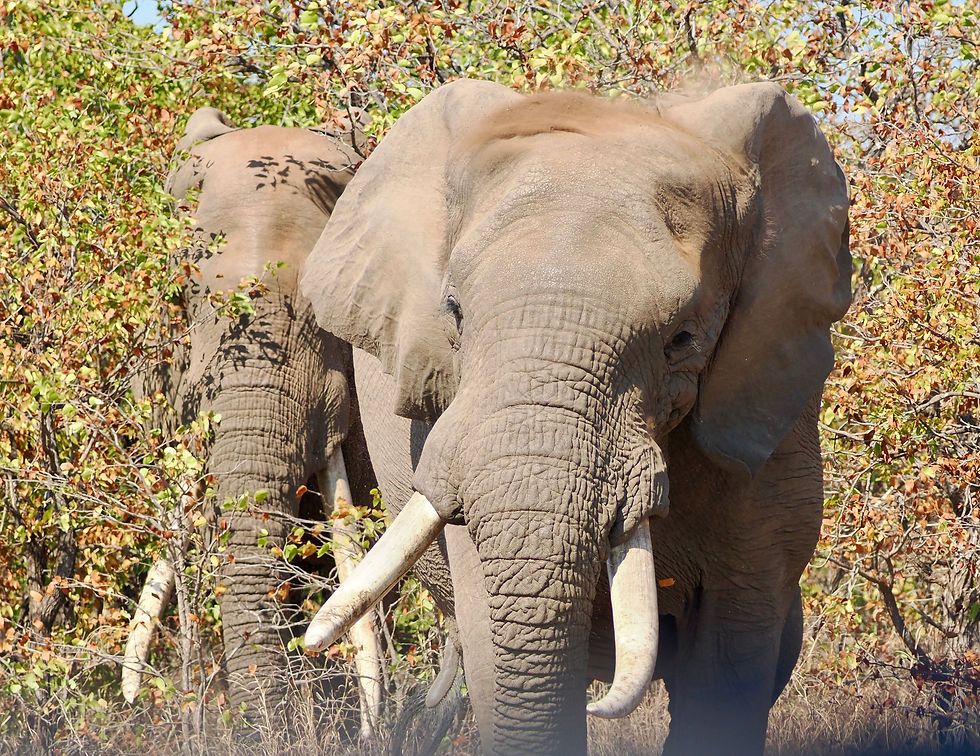


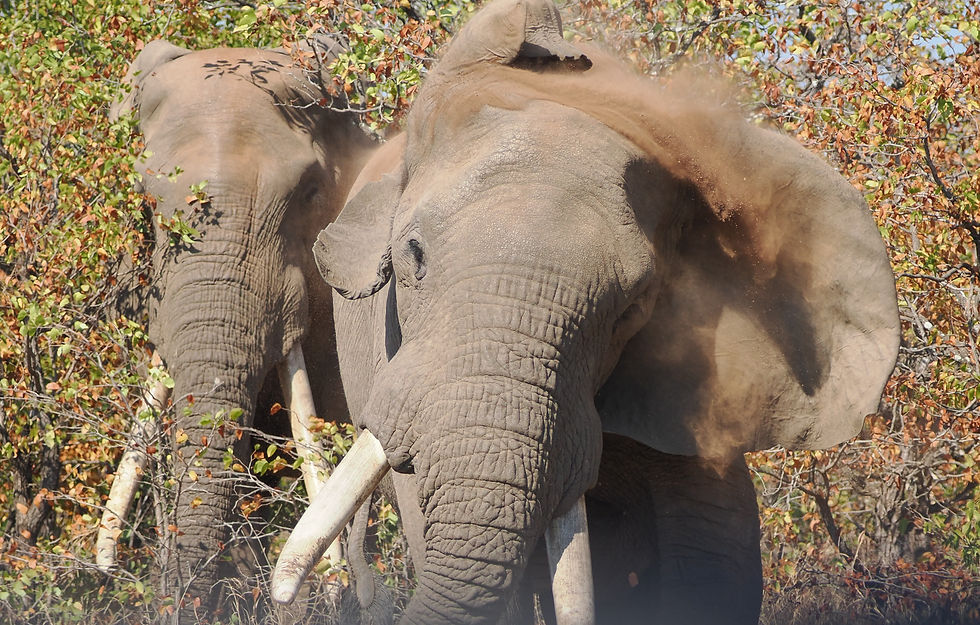




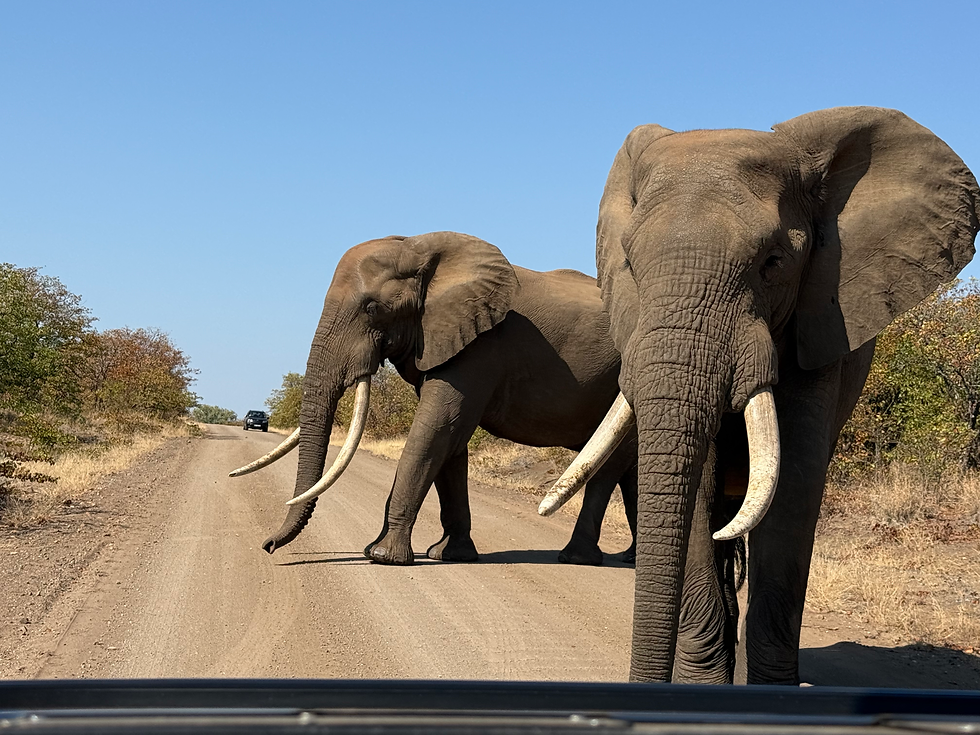
This Xidudla's Trunk with a wound on it. You can also see some wear & tear on his Tusks in this close up.
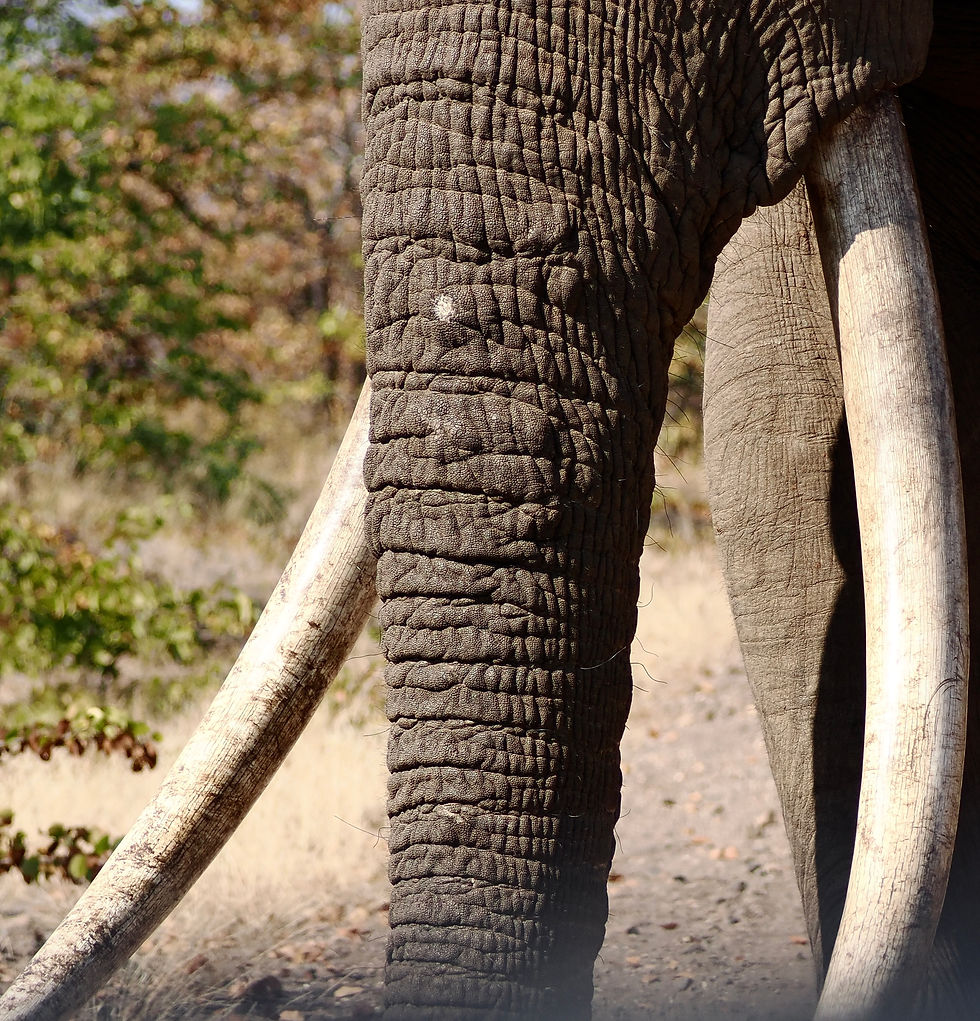



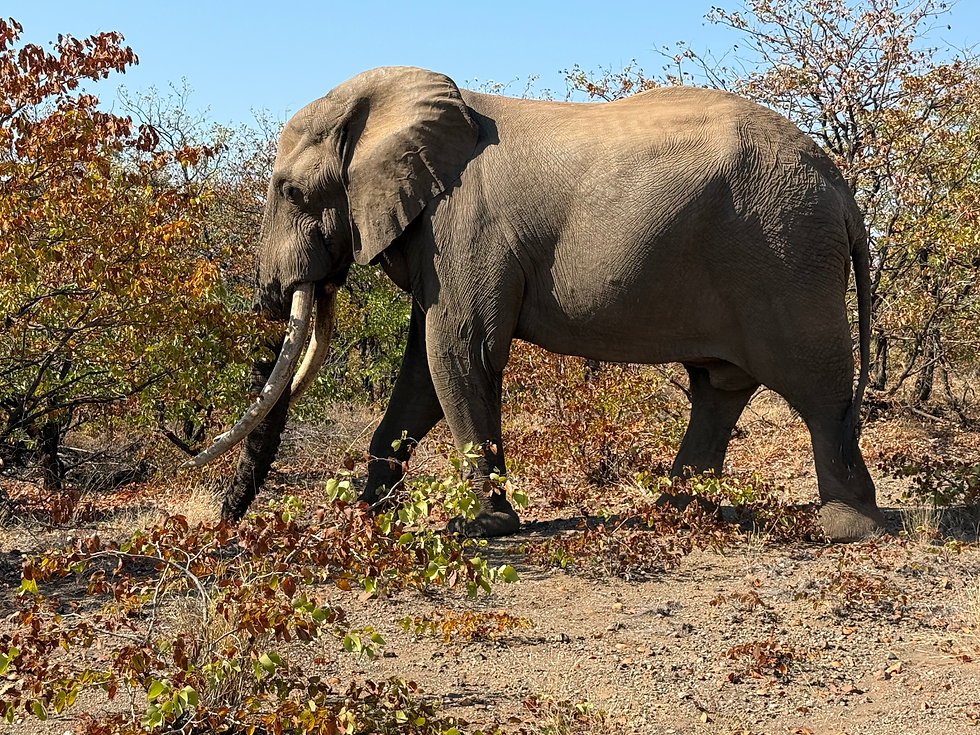
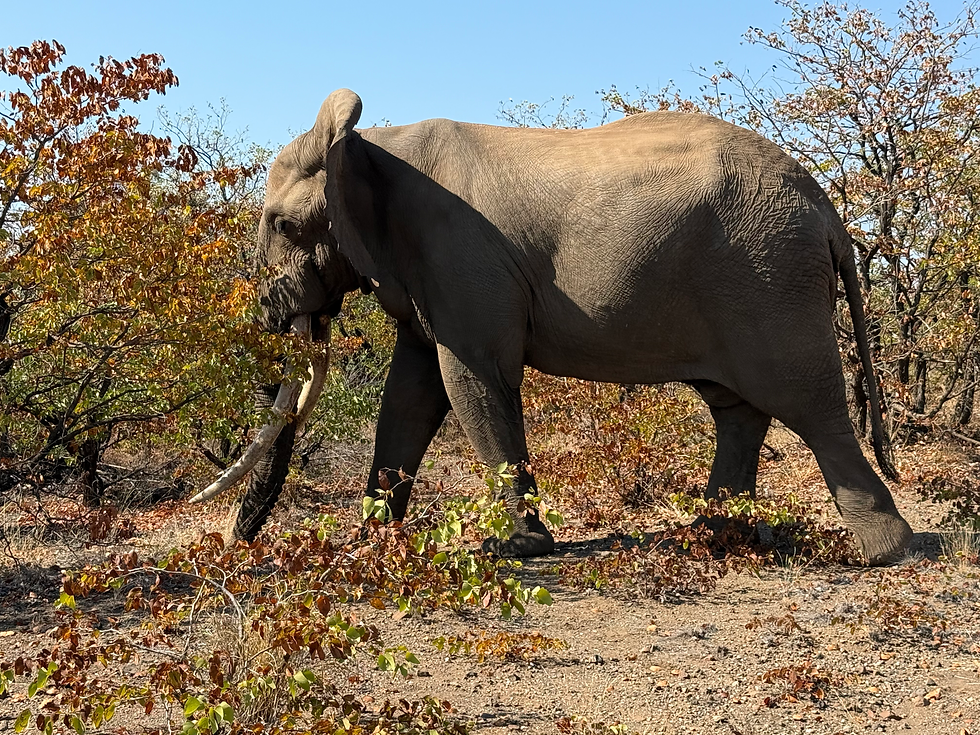
This encounter happened shortly after Andrew & I had a discussion about how sensitive Elephants (Andrew's favorite mammal) are because they have some much skin. That is was important to send them the appropriate energy.
Honestly when the Askari started moving quickly toward the vehicle I asked Andrew "Are you nervous". He shook his head and a sign to me to be calm and send the appropriate energy. So I did...
After it was over he took my pulse and said I did ok. I tell you this because the phrase "Appropriate Energy" is important in our next significant Elephant encounter the next day.
This Elephant was totally owning the road -- there was a line of cars from the other direction. This big guy was in Musth - a periodic condition in male (bull) elephants characterized by heightened aggression, increased sexual activity, and hormonal changes, particularly a surge in testosterone. They also leak urine which it quite pungent!
As you probably know by now this was not a moment for calm -- in fact the opposite. Andrew was shouting at the Elephant and at one point I asked "Are you trying to get him to charge the car?" Of course, he wasn't but it was so opposite of yesterday's encounter I did not expect it.
Not only was Andrew protecting us, he had some concerns about the line of cars waiting to pass, so he got the bull off the road and we stayed nearby for a bit to be sure the cars got by. You don't need a guide to drive in Kruger and often non-professionals do not know how to deal with Elephants.
Some photos from that encounter...


He had lost a tusk and you can see he is secreting from a glad near his eye...
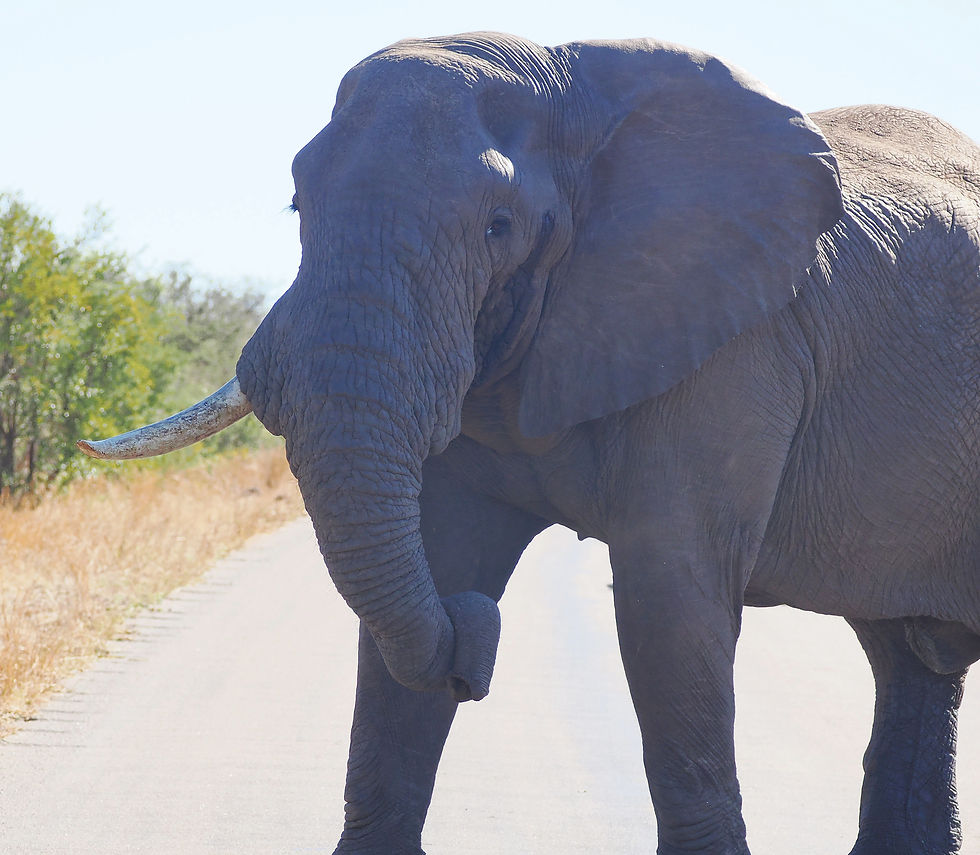
I love the behavior where they rests their trunk on a tusk.
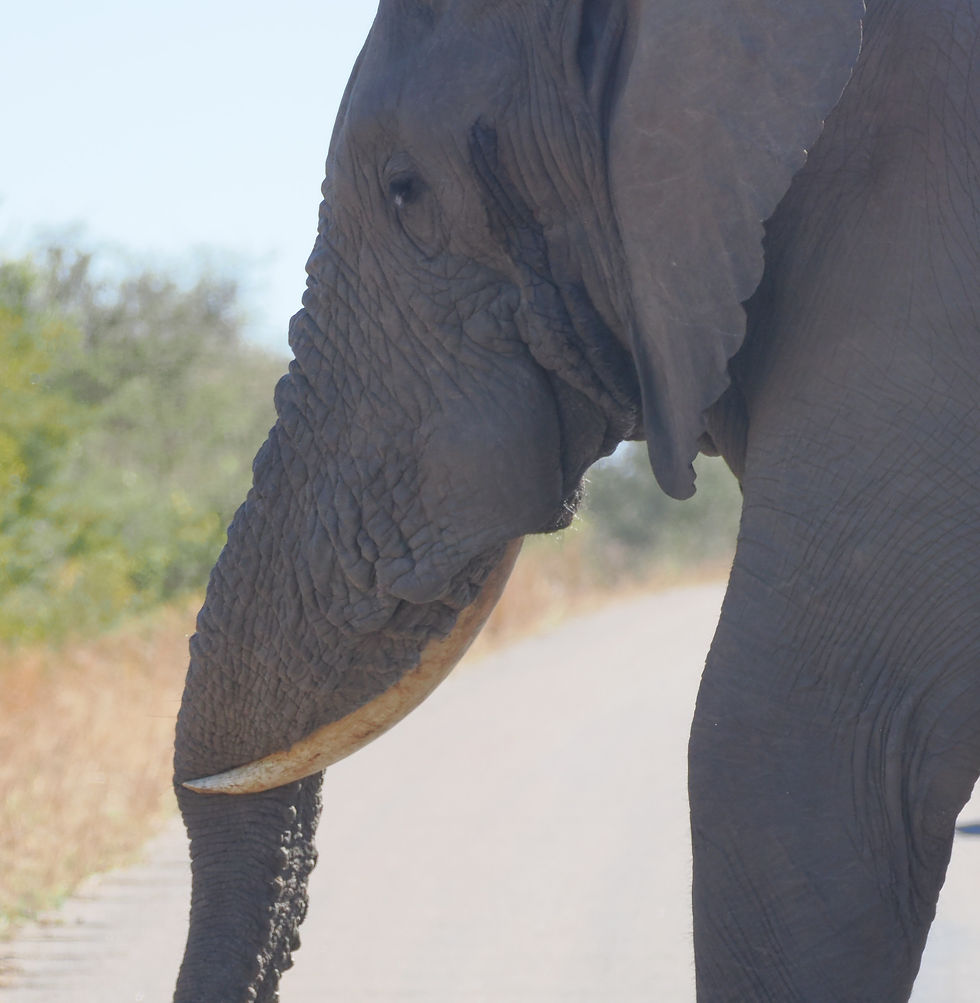
I wondered if he was crossing his legs so he could hold in the urine...

Evening Bath time!
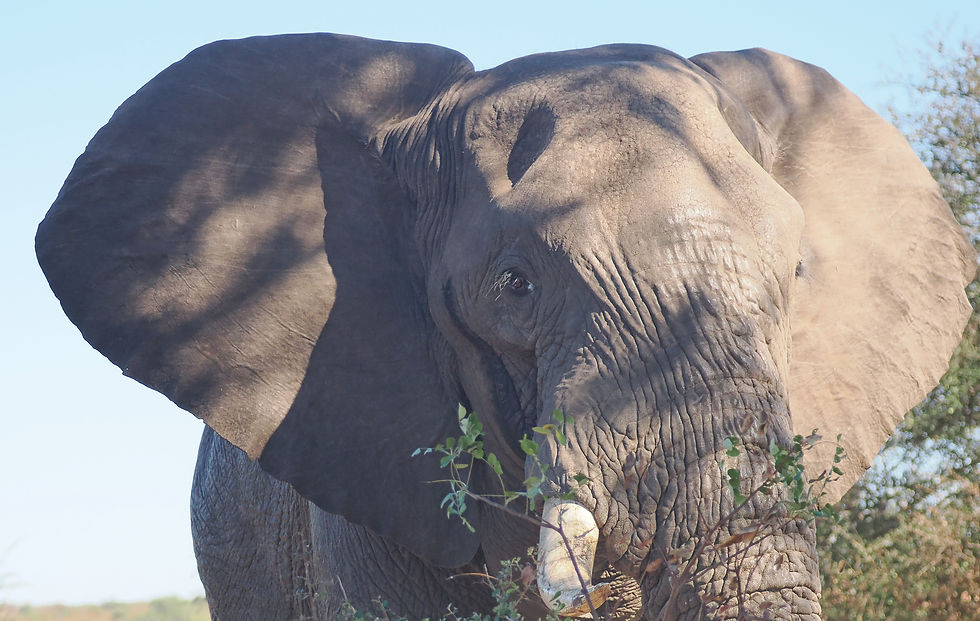
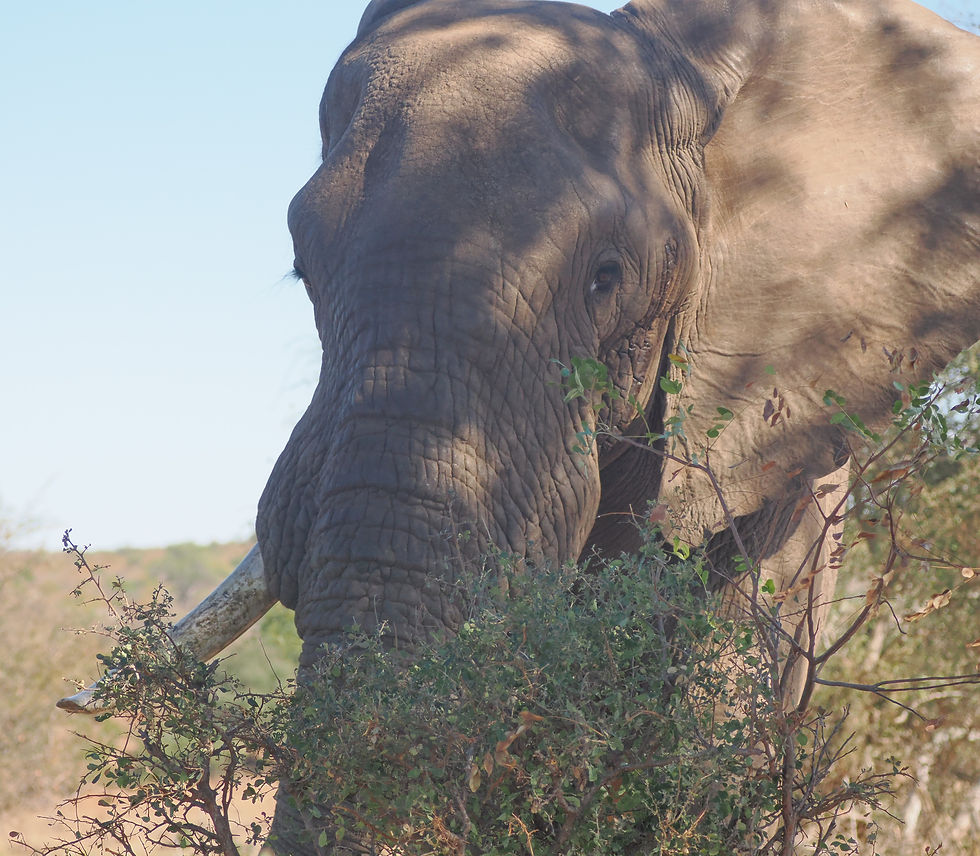
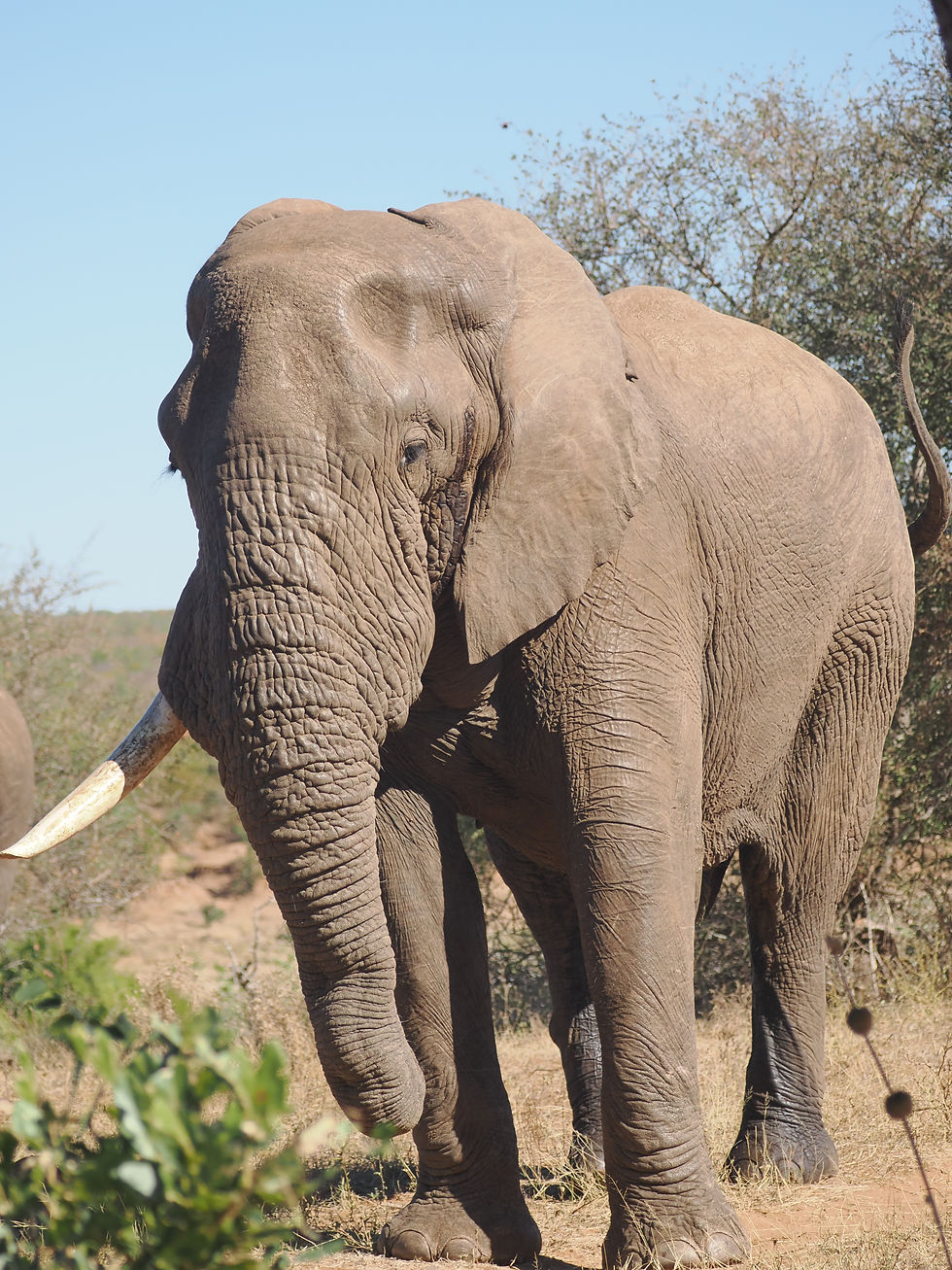
Caught a very young calf with the herd.
We also encountered these on the road one day... Elephant bones
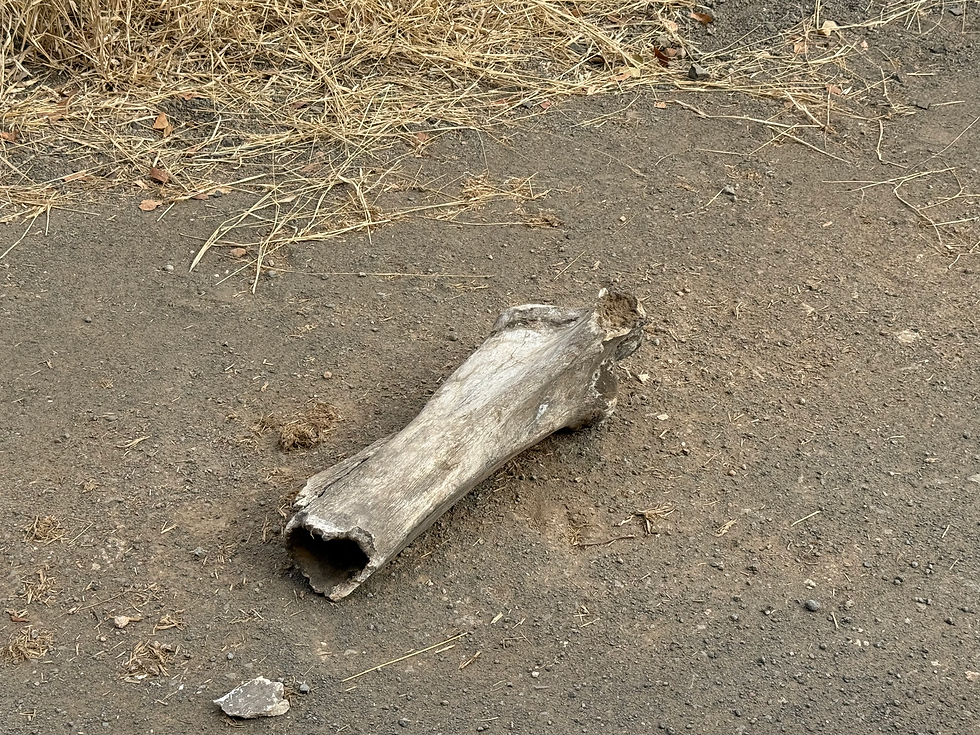

Note the muddy forehead on this beauty.
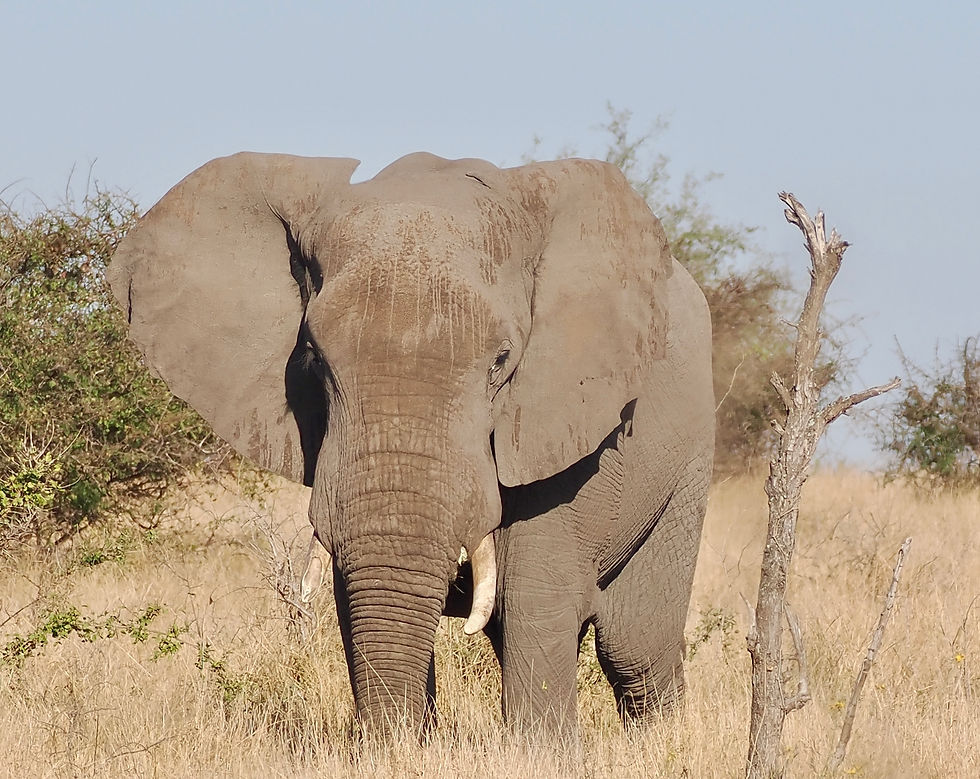
Looking forward to my next encounter with these magnificent beasts!
Note -- I borrowed liberally from Andrew's Blog for the background material in this post.



Comments